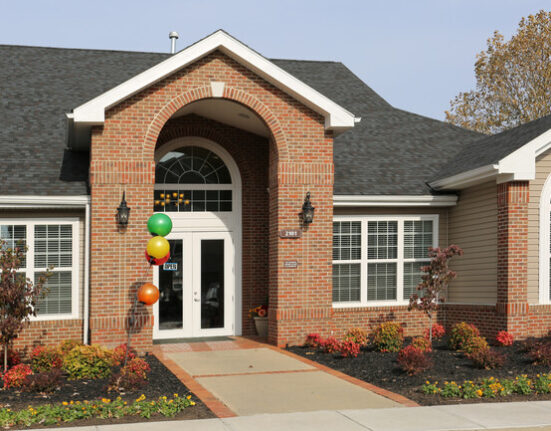Are you staring at your backyard, wondering how to start a vegetable garden? Starting a garden can cut your grocery bill. This article shows you steps to create a thriving vegetable patch.
Let’s grow!
Selecting the Ideal Garden Location
Continuing, the appropriate location for your vegetable garden is crucial. You require an area that receives 6 to 8 hours of sunlight daily. This area should also have soil that allows proper water drainage to avoid water accumulation.
If you discover such a location, and the soil quality is lacking, don’t stress. You can opt for raised beds or introduce organic matter to enhance it. Keep your garden out of high wind zones and high foot traffic areas.
It’s also essential to ensure the soil is nutrient-rich. Introducing elements like worm castings or compost can significantly contribute. Keep in mind that plants thrive optimally in loamy soil which retains water but has good drainage as well.
Structure your garden layout considering these factors for vibrant, healthy plants.
The premium gardens are born out of clever planning—sunlight exposure, steady environment, good drainage, and nutrient-dense soils lay the building blocks for accomplishment.
Choosing the Right Garden Type
After finding the perfect spot, decide on the type of garden you want. If space is tight, container gardening works well. This means growing veggies in pots or boxes instead of the ground.
It’s great for people who only have a balcony or small yard.
For those with more room, raised beds are a good choice. They are like big boxes filled with soil on top of your yard. You can make them 4’ x 4’ or 4’ x 8’. This makes it easy to reach plants without stepping on the soil and hurting it.
If you plan to grow lots of food, think about a traditional ground garden. For a family of four, aim for a garden that’s 12’ x 24’. Always leave paths that are at least 4 feet wide between areas so you can walk through easily.
This helps when watering or picking your veggies.
In all gardens, make sure there’s enough water and sunlight. Vegetables love places that get full sun for most of the day.
Planning Your Garden Layout
Planning your garden layout is key to growing healthy vegetables. It makes sure plants get enough sun and water. Here’s how to do it:
- Draw a simple map of your garden area. Include where north is, to avoid taller plants shading shorter ones.
- Place veggies that grow tall, like tomatoes, on the north side.
- Put small, cool-season veggies, such as lettuce and parsley, in shady spots.
- Add flowers like marigolds around your veggies to keep pests away and attract good bugs.
- Use stakes or trellises for plants that climb, like beans and peas.
- Choose a drip irrigation system or soaker hoses for watering. These save water by dripping it right at the plant roots.
- Plan where each type of vegetable will go based on its planting dates from seed packets.
- Consider using companion planting. This means putting certain plants together, like tomatoes and basil, because they help each other grow.
Next up is preparing the soil…
Soil Preparation
Soil preparation starts with getting to know your dirt. Test the soil, then add compost and plant food to make it rich and full of nutrients.
Testing and amending the soil
Testing and amending the soil is key for a healthy garden. First, learn what your soil needs then add the right stuff.
- Get a soil test kit from a nursery. This shows pH levels and nutrients.
- If soil is too acidic, add lime. For too alkaline, sulfur helps.
- Mix in compost or manure for nutrients. They make soil fertile.
- Use organic mulch like straw or wood chips on top. This stops weeds and keeps moisture.
- Clay soils need more compost to help with water and air flow.
- Sandy soils benefit from organic matter too, for holding water and nutrients.
- Add nitrogen fertilizer if plants look weak or yellow.
- Follow test kit advice for specific nutrient boosts like potassium or phosphorus.
- Plan to check soil every growing season to keep it healthy.
Next up, let’s plan your garden layout!
Layout and design of planting beds
After rectifying the soil, the next step is planning planting beds. Begin by drafting a blueprint of your garden site. This assists in organizing where each element will be placed.
Be mindful to allocate exclusive spots for perennials such as asparagus and rhubarb since they re-emerge annually. Furthermore, ensure that water sources are proximate to your beds for simplified irrigation.
To optimize growth, maintain a space of 2-3 feet between plants. Employ the method of square-foot gardening to segment the land into small squares for diverse vegetables like carrots and salad greens.
This strategy ensures that each plant obtains sufficient space to mature well.
Mulching and fertilization strategies
Mulch keeps vegetable plant roots cool and moist. Regular fertilization helps plants grow strong. Follow these steps:
- Spread mulch around your plants. This could be hay, leaves, or bark.
- Use two to four inches of mulch to control weeds and save water.
- For vegetables like tomatoes and leafy greens, use organic fertilizers.
- Read the fertilizer package carefully and follow its instructions.
- Apply fertilizer every four to six weeks during the growing season.
- Check plants often for signs of pests or diseases.
- Use compost to improve soil texture and add nutrients.
- Plant companion plants that help each other grow better.
- Set up a sprinkler system or irrigate by hand to keep water levels right.
- Rotate your crops each year to keep the soil healthy and reduce disease.
Just as your vegetables need nutrients, so does your lawn. Remember to feed your lawn regularly to promote thick, healthy grass, which complements the beauty of your garden and provides a lush backdrop for your vegetable beds.
Planting Your Garden
Starting a garden requires thoughtful preparation. Employ a garden trowel for hole creation and ensure seeds and transplants are planted correctly.
- Interpret each seed packet with care. It provides information on the depth your seeds should be planted.
- Position larger plants such as tomatoes at the rear. This prevents them from overshadowing shorter plants.
- Utilize the trowel to create holes for transplants, like eggplants and peppers. Ascertain that the hole is adequate for the root ball.
- Hydrate your plants thoroughly following their planting. They necessitate substantial water for initial growth.
- Schedule planting times for vegetables like lettuce and carrots. This ensures you won’t have an excessive abundance ready simultaneously.
- Opt for vegetables that are effortless to grow, like tomatoes, cucumbers, and beans.
- To control pests, study integrated pest management practices that work to deter bugs without chemicals.
- Scatter mulch around your plants to maintain soil moisture and coolness, limiting weed proliferation.
- Consider crop rotation the following season – it assists in maintaining soil health and minimizing pests by altering crop locations annually.
- Recognize the growing seasons for each vegetable – avoid planting summer vegetables like squash prematurely or they won’t endure.
Following these measures, your vegetable garden will commence robustly and supply plenty of fresh produce for consumption!
Garden Maintenance
Keeping your garden healthy means regular care—water, pull weeds, and feed the plants. Ready to dive deeper? Keep reading for more tips on keeping your vegetables thriving.
Watering methods and schedules
Watering your garden right is crucial. It helps plants grow and fights off diseases. Here are the best ways to water your garden and when to do it:
- Use a long-handled watering wand for small gardens. This tool helps you reach all parts easily.
- Aim water directly at the root zones of your plants. This method prevents leaf diseases by keeping foliage dry.
- Water your garden 2 to 3 times per week. In hot months, water every day to keep soil moist.
- Set up sprinklers for large areas. They cover big spaces fast and save time.
- Install an irrigation system for precise watering. This system targets plant roots without wasting water.
- Use mulch around your plants. Mulch holds moisture in the soil and reduces the need for frequent watering.
- Check the soil before watering. If it’s dry 2 inches below the surface, it’s time to water.
- Collect rainwater in barrels to use in your garden. It’s free and better for your plants than tap water.
Follow these steps to make sure your vegetables get enough water without overdoing it or wasting resources.
Managing weeds and pests
Eliminate weeds to keep your vegetable garden healthy. Monitor for pests and diseases early to protect your crops.
- Pull out weeds by hand when they’re small. This stops them from spreading.
- Use mulch around plants. It blocks sunlight, stopping weeds from growing.
- Install barriers or fences to keep animals away.
- Check plants often for bugs like cutworms and early blight.
- Use safe pest control methods. Soap water can stop many pests.
- Plant marigolds among vegetables; they repel some pests.
- Rotate crops each year to prevent soil diseases and pests.
- Pick off bugs by hand if you see them on leaves.
- Water in the morning so leaves dry during the day, avoiding diseases.
- Use high-quality seeds as they resist pests better.
Next, let’s talk about fertilizing and crop rotation to fuel growth and health in your garden.
Fertilizing and crop rotation
Planting vegetables and managing weed and pests are important steps, succeeding by fertilizing and crop rotation. These practices keep the soil nutrient-rich and enhance the growth of the vegetables.
- Every year, introduce compost into your garden. This enriches the ground.
- Regularly apply fertilizer. It provides the essential nutrients that plants require to grow.
- Understand the needs of your plants. Some prefer a greater amount of nitrogen, while others might require more potassium.
- Maintain a garden journal. Document your annual planting locations.
- Alter the planting zones for crops annually based on their family group – for instance, shifting tomatoes to the former area of onions from the previous year.
- Grow legumes, like peas or beans, in regions previously occupied by heavy feeders such as cabbage or corn from the previous season.
- Assess your soil every couple of years to understand its nutrient deficiencies.
- In case of sandier soil, introduce organic matter to aid in nutrient retention.
- For denser clay soil, incorporate coarse sand or gypsum to enhance drainage and structure.
- Acknowledge that different vegetables consume varying nutrient amounts.
By altering the planting areas for specific vegetables annually and restoring nutrients via fertilization, you maintain soil health and productivity in your garden year after year.
Conclusion
Starting your own vegetable garden is easy. First, pick the right spot that gets plenty of sun. Next, decide on what vegetables you like to eat—lettuce, tomatoes, and green beans are good for starters.
Make sure your soil is rich; add compost to help. Plant seeds following instructions on the packet. Water them well but don’t drown them. Fight off weeds and pests as they come up.
With these steps, you’ll enjoy fresh veggies all season long!














